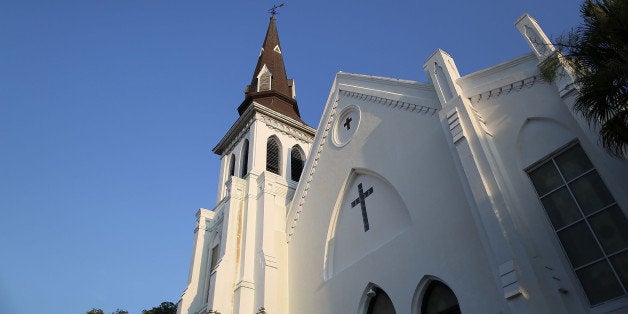
The burning of black church, a long smoldering phenomenon, sparked news stories in the summer of 1996 and then, flames quickly doused by a fire-retardant mixture of guilt and self-interest. The public once again falsely assumed that the fire of racism was controlled if not out. This nation's inability to include and maintain a healthy diversity threatens to intensify as we arm ourselves against one another though gun, bomb and torch. The real significance of burnings should be determined by those whose churches have recently burned. The members of each faith community in this country need to take note of an attack on any faith community.
"The church stands as a symbol of black pride and self-sufficiency," said Rose Sanders, a black lawyer in Selma, Alabama. "Burning one is as close as you can come to a lynching without killing somebody." Meanwhile investigators often dismiss the idea of deliberate arson due to a climate of white supremacy. Others hold to the belief that the fires are a mere coincidence. From January 1995 through June 1996 more than 60 African-American and multi-racial churches, most in the southeast, were burned.
Whites often fail to recognize the significance of the black church, tending to believe there is nothing racial about the fires today. The attack on black churches is an attack on the heart of the black community, its political, social, educational and spiritual center. Whites, motivated by genuine care sometimes raise money to help rebuild burned black churches. If they are able to find a conspiracy by a few on the radical fringe they can exonerate themselves from the racism that still smolders. But racism is a problem much greater than arson. Rebuilding structures does not dismantle racism. Simply sending money does not include African-Americans in the ecclesiology of a nation which believes it has the soul of a church.
Once again the black church is the target of violence. Dominant whites still exclude African-Americans from full participation in the community of the nation and exclude themselves from the black church. A conspiracy theory is not new either. Vincent Harding, African-American historian, noted that near the end of the Detroit rebellion of 1967 Lyndon Johnson made a special address to the nation. He was frightened and so was all of America. Johnson suspected that a black revolutionary conspiracy was at work. Harding wrote, "The nation was frightened, confused . . . . In spite of what Lyndon Johnson suspected, there was no organized, national black revolutionary movement." The conspiracy theory is a way to isolate the issue and relegate the problem to a few. Racism is more insidious than that and the African American struggle for freedom is more powerful.
Although 1996 investigations found no organized conspiracies, it was no coincidence that the fire at New Liberty Baptist church in Tyler, Alabama, was set just two days before thousands gathered to commemorate the Selma demonstrations that led to the passage of the Voting Rights Act of 1965.
Studs Terkel wrote in his 1992 book, Race: How Blacks and Whites Think and Feel about the American Obsessions, that race obsesses everybody, even those who think they are not obsessed. An obsession rules us, as a god might; the original sin of racism remains a powerful obsession. Racism is real. It goes beyond prejudice and discrimination and even transcends bigotry, largely because it arises from outlooks and assumptions of which we are largely unaware.
Many Anglo-Americans believe that for at least the last generation, blacks have been given more than a fair chance and at least equal opportunity if not outright advantages. Moreover, few feel obliged to ponder how membership in the majority race gives them powers and privileges. We must go beyond the fact that some people don't want to be bothered by multiculturality. We must move beyond the attitude that somebody "played the race card." This isn't a game of cards. People must take seriously their faith that God created all people and that therefore you don't have to burn the guy who seems to be creeping up on you.
Perhaps more important, we must come together locally in houses of faith and in the network of faith communities and talk, and listen, and dialog, no matter how difficult. People of color know a great deal about white Americans--they must in order to function in this country. Whites remain remarkably unaware of the lives, feelings and hardships of people of color. The latter are weary of educating white people. On the way toward trust, we need to listen, not judge, debate or defend, but simply listen and see what the flames signify.
[The above are direct words from an article I published in 1996 after the rash of burnings of black churches. I write them again today--no update necessary.]
